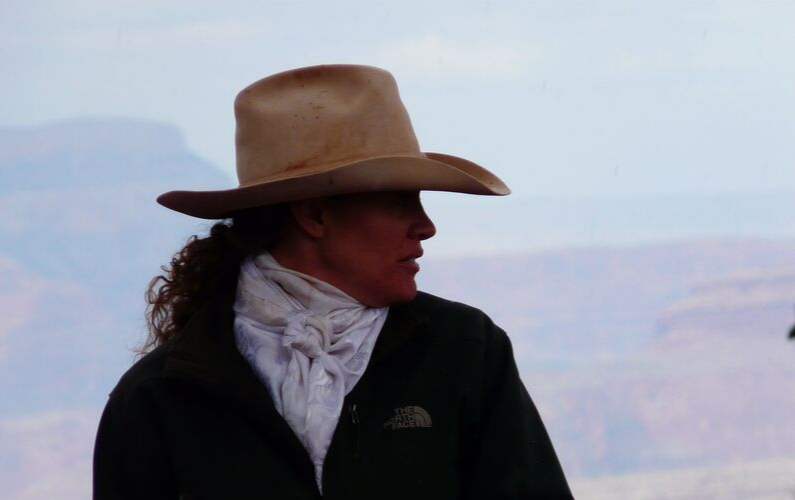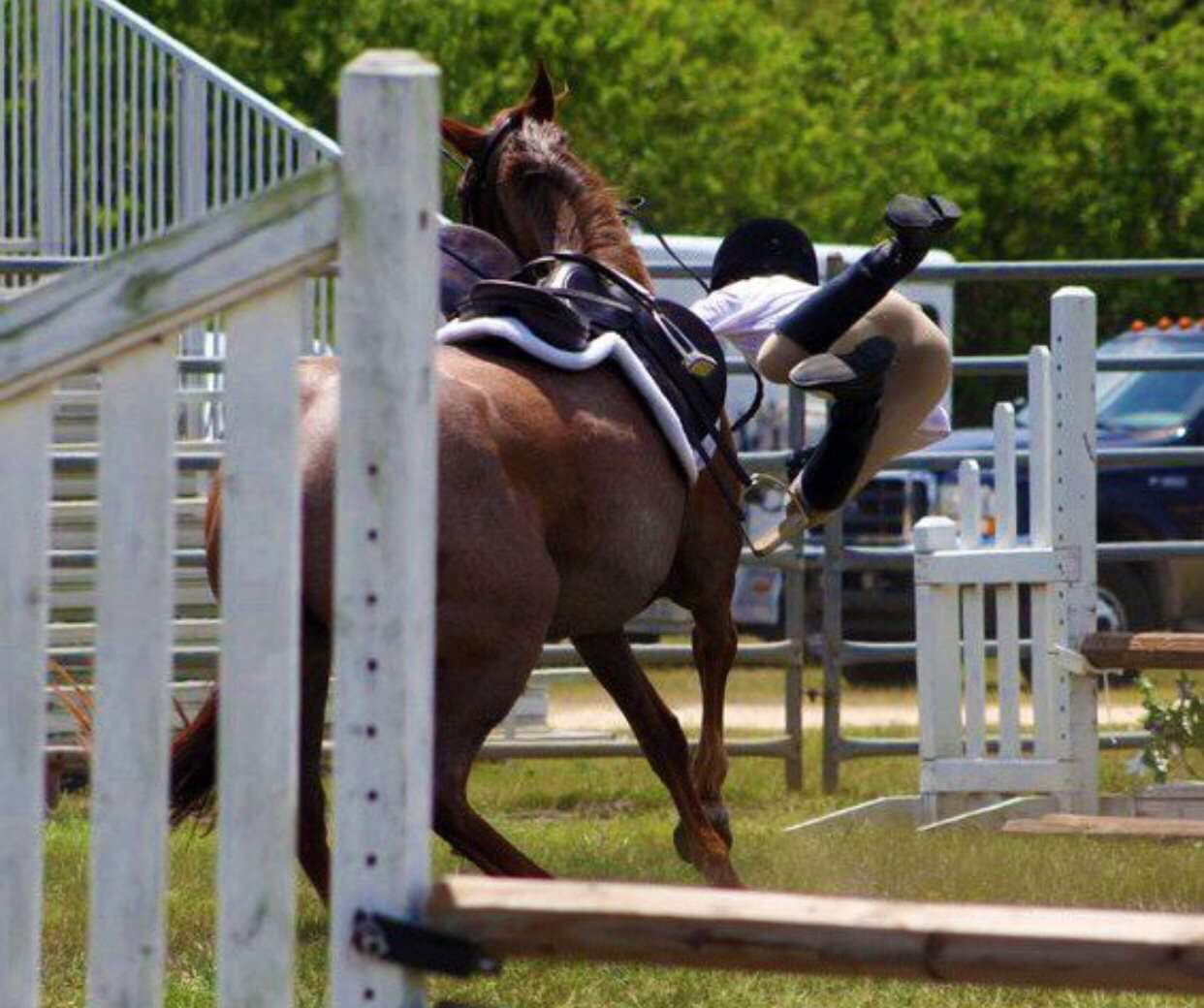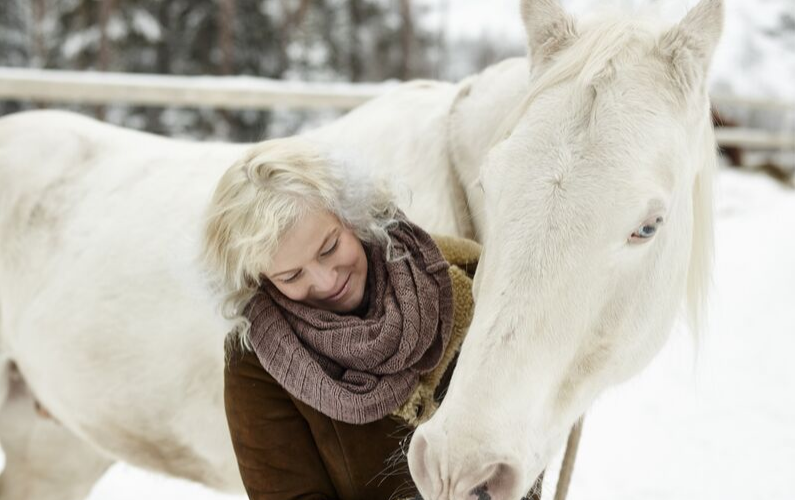Have you ever said these things to yourself?
- You have to be the best
- Your failures are proof that you aren’t good enough
- You have to have work – life balance
On the surface these may look a little bit like goals. Everybody wants to be the best at what they do. And you’ve heard this before “Failure is not an option!” (Apollo 13 I think) and “you must have balance in your life”. I don’t know who said the last one, but it seems to be pushed at work a lot.
The fact is, these ideas are just not true. In fact, they are lies we tell ourselves that can take us down a path of negative thinking and actually delay our progress. I’m certain that if you find that you are telling yourself these lies, that you will find a solution in some of the steps below.
Lie # 1 – You have to be the best
Truth – This lie is all about perfectionism. Striving for perfection can be one of the greatest causes of stress and under-performance in your riding. However, not all perfectionistic tendencies are bad.
Psychologists recognize two forms of perfectionism, adaptive and maladaptive. People with adaptive perfectionism are motivated by their high standards but they pursue their goals without compromising their self-esteem. They take into account their strengths and limitations but don’t overextend themselves unless it really matters. They are able to excel and complete tasks in good time. They are not hyper critical of themselves or their work.
Perfectionism turns maladaptive when people have a constant need for approval and are constantly questioning their own judgments. They put themselves under constant pressure to meet unrealistic standards. They tend to procrastinate because meeting their own standards makes things hard to get started. They feel a lot of anxiety and even depression because they are holding themselves to an ideal they can’t possibly reach. They worry about making mistakes and letting themselves and others down.
Being a maladaptive perfectionist can cause you to get stuck in a fear driven mindset. Often times this makes us give up or find excuses not to ride or compete so we can avoid the possibility of being imperfect. These individuals are often labeled as “committed” or “hard working”. But while they take pride in these labels, they often mistakenly believe that being the best in practice should always make them the best in competition. When they find out otherwise, it is soul crushing to them and they fall into a pattern of negative self-talk.
Do you identify with these tendencies:
Do you….
- Place unreasonable high demands on yourself?
- Make mistakes because the fear of under-performing causes you to ride tight and tense?
- Ride motivated only by ribbons, standings, spectators and beating opponents?
- Struggle to ride in the present because you’re focused on outcomes?
- Fear you won’t be able to live up to your own expectations?
- Attempt to ride with perfect technique that it causes you to ride mechanically?
- Are you able to let go of mistakes, or do you make excuses for them?

How to Overcome Perfectionism
If you saw yourself in the above tendencies, here are some tips to help you overcome your perfectionism:
Set goals for your riding and showing that are focused on your performance not outcomes.
Goals help us use our training and practice time more efficiently. They help us focus on what’s important and to find strategies and techniques that lead us to success. When it comes to our horses, and life in general really, there are many things out of our control. The weather, the judge, the ground, other people to name a few.
But there are just as many things within our control. Our behaviors, emotions, and skills are all under our control. When it comes to goal setting, a successful outcome should never be considered a goal. You don’t have control of it.
Instead, think of it as a reward for achieving your short and long term goals. The more you focus on the outcome, the further you’ll be from achieving it.
There is a lot more information about goal setting in this article 6 Reasons You Need to Set Goals to Improve Your Riding .
I also would also like to invite you to get the quick mini-course on goal setting by clicking the link at the bottom of this article. It will walk you through a couple of steps to help you identify what you really want and begin to put a plan in place to help you achieve it.
Compare yourself to yourself.
When we compare ourselves to others, we are often comparing ourselves to those who have been accomplished for a long time. We don’t see them through their own struggles.
Comparing yourself to other people on a regular basis can easily lead to feeling inferior. There will always be a lot of people ahead of you in any area of life.
So compare yourself to yourself…
- See your improvement, see how far you have come.
- Look back at what you have overcome.
- Appreciate yourself and focus what you have done and are doing rather than what everyone else is doing.
Go for good enough.
Aiming for perfection usually winds up in a project, task or something else never being finished. Shoot for B- work. Wait, what? That’s right! Go for good enough instead of perfect.
There’s a story about a research project on creativity, productivity and perfectionism.
Some students were divided into two groups. The first group was told they could create one thing, anything they wanted, and they had a whole year to complete it. They would be judged on the quality of the product.
The second group was told they could create anything they wanted, but they needed to make as many as they could in a year and they would be judged on the quantity of their work.
After the year, the researchers found that not only were there more of the products from the second group, but the quality of the product was better than the first group even though they had a whole year to perfect it.
Why do you think that is? The second group had more practice! They could view their mistakes along the way and work to improve them the next time.
So do good work but at the same time don’t get lost in trying to improve and polish something so much that you don’t even finish or even start what you set out to do.
“Instead of waiting for perfection, run with what you do and fix it along the way….” — Paul Arden.

Lie #2 – Your failures are proof that you aren’t good enough
“You’re blessed when you’re content with just who you are-no more, no less. That’s the moment you find yourselves proud owners of everything that can’t be bought.” Matthew 5:5
Truth – This is the twin sister to Lie #1. The truth is that you are trying new things. You are developing new skills. Skill development actually suffers without mistakes to learn from.
Learn to embrace your mistakes. They are learning opportunities, not missed opportunities. They are what will make you better! When you make your own best effort, you may not always be successful, but you will be fulfilled.
“The idea that we should embrace failure, and that failure is a great teacher, is in many ways in direct conflict with the way we actually respond to failure,” says Susan Baroncini-Moe, CEO of Indianapolis-based Baroncini-Moe Executive Coaching, LLC. The competing expectations or ideas about behavior related to failure can make us feel worse–like we’re failing at failing, she adds.
How to Benefit from Failing
Manage the Emotions
Our emotions tend to run the show. The first step in the process to bouncing back is to allow yourself to feel your feelings. According to Baroncini-Moe, when you try to brush off the very real emotions and insecurities that can arise, they will eventually resurface, she says. However, take care not to do anything rash (like run off and sell your horse) when you’re in this emotional state.
Allowing yourself time to feel the embarrassment, anger, or other emotions that come with failing or even making a mistake helps you get beyond the failure faster, she says.
Map Out What Went Wrong
Even as you deal with the emotional component, start thinking about what went wrong. If the mistake was made during a competition, speak with your trainer and review any video that was taken.
Think about your state of mind during your ride. Were you distracted by thoughts or events around you? Were you trying something new? Were there issues that you couldn’t control that contributed to the failure?
Sometimes, writing in a journal about the error can help you see exactly how it played out, and how to prevent it from happening again. You may also find that simply listing the factors that contributed to it can be helpful in recognizing and addressing them. As you identify the issues and gain some perspective, you may even see them in a different light.
Create New Systems or Routines
Once you’ve mapped out what went wrong, you can identify if there is a system or routine that can help prevent it in the future.
Maybe the error was caused by being rushed, so tweaking your warm up routine, or allowing yourself more time to get prepared will solve the problem.
Did the ride go wrong because certain factors were ignored? Was there a miscommunication that would have clarified the situation?
As you unearth the weak points in your process, you can create a checklist, system, or other formalized process to prevent it from happening again.
Share What Was Learned
As you make your way through your mistakes and learn how to avoid the same issue in the future, share what you learned. Sharing your experience can help build a culture of learning amongst others and may help shape others’ attitudes about failure.
Everyone makes mistakes–everyone. The difference is, are you learning from them? It’s the only way you can improve.

Lie #3 – You have to find balance between work, home, riding, family, friends, etc.
Truth – When you are focusing on one area of life, there’s probably another area that’s not getting much attention. We all have seasons in our lives that take our attention away from other things that are important to us..
Many of us are still working full time jobs. Maybe you have a wayward child, or aging parents that need your attention. We may have health challenges of our own. All these things can pull our focus away from our riding and what we want to accomplish.
Compound that with the feeling that you are neglecting your horse, a living and breathing being! It can be overwhelming at times. You may feel that to succeed at one, means you are failing at another. These are important parts of our lives!
Now, you do need to know your priorities. We always seem to find the time to do the things that are important to us. Be ruthless in protecting your priorities if it’s a “must” for you. Put earmuffs on when getting advice on what you should and should not be doing from advice givers that are not part of your inner circle.
Tips on Setting your Priorities:
The Principle of Priority states that a) you must know the difference between what is urgent and what is important and b) do what’s important first. What’s important is the work. – Steven Pressfield.
- This means stop doing the “easy” stuff first. Our days get filled up with “busy work”. When you begin clearing up your small tasks, you seem to attract more and more small tasks to work on. Do the things first that will make significant movement forward toward your dreams and goals.
- Stop prioritizing someone else’s emergencies. The more you do other people’s emergencies, the more you lose sight of what’s important to you. These are often the items that bubble up on our to do lists as “urgent”
- Start prioritizing freedom. Freedom to work on your dreams. Freedom to do the things that are important to you.
Try this:
- On your daily to do list, mark each item with a “I” for important or a “U” for urgent.
- Do the “I”s first.
It is that simple!
That’s it! I hope you found this article helpful. If you see yourself in any of the scenarios above, please write and tell me about them. I would love to know about your journey and how you overcame some of these lies.
Remember, if you’d like help in clarifying what your goals are and what you really want, click the link below. It will help you recall all those wonderful ideas and dreams you’ve had over the course of your life and focus on what’s really important to you.
Enjoy the Ride!


Thank you this article really hit home ❤️
Hi Cheryl! Thank you for your comment! I see you also decided to subscribe! I’m so happy and honored to have you join! I try to write content that’s helpful and covers topics you want to learn about! I hope to learn more about your story as the journey continues!
Enjoy the Ride!
Pam